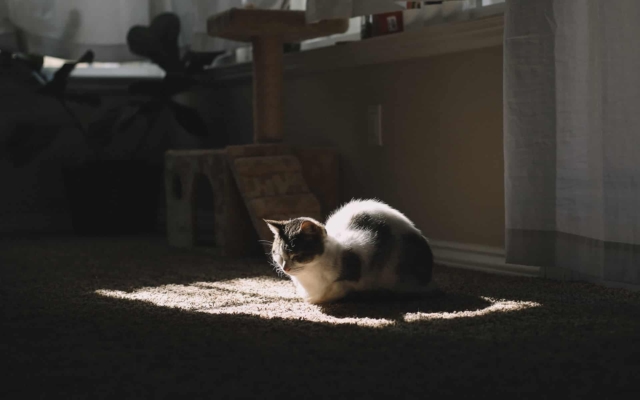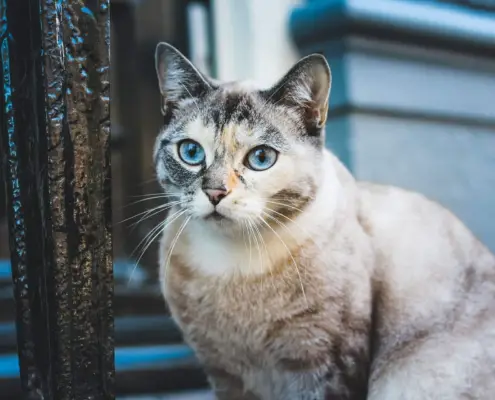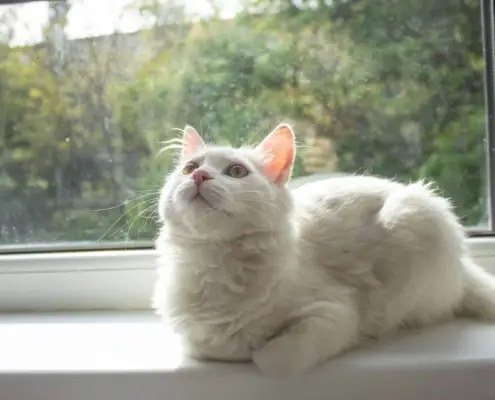
Cats are fascinating creatures with unique growth patterns. From the moment they are born, they undergo a series of physical changes that eventually lead them to adulthood. However, not all cats grow at the same rate, and some may even stay small throughout their lives. In this article, we will delve into the science behind feline growth patterns and explore why some cats do not grow as large as others.
Normal Growth Patterns in Cats
Before we dive into the reasons behind stunted cat growth, let’s first understand the normal growth patterns in cats. Like most mammals, cats experience rapid growth during their early stages of life. Kittens double their birth weight within the first week and continue to gain weight at a steady pace. By the time they reach six months of age, most cats have reached approximately 75% of their adult size. The remaining 25% is typically achieved over the next six months to a year.
Factors That Influence Cat Growth
Several factors can influence the growth of cats. Genetic factors play a significant role in determining a cat’s size. Different breeds have distinct growth patterns, with some breeds known for their large size while others are naturally smaller. Additionally, gender can also impact growth, with males generally being larger than females.
Nutrition is another crucial factor in cat growth. A well-balanced diet, specifically formulated for kittens, is essential during their rapid growth phase. Adequate amounts of protein, fats, vitamins, and minerals are necessary to support healthy bone and muscle development.
Genetic Factors Affecting Cat Size
Understanding the genetics behind cat size is key to unraveling why some cats stay small. Different genes control various aspects of growth, including height, weight, and body structure. Some breeds, such as the Munchkin and Singapura, have specific genetic mutations that result in their small stature. These genes can influence bone growth and metabolism, ultimately limiting the cat’s overall size.
Nutritional Considerations for Cat Growth
Proper nutrition is vital for healthy cat growth. Kittens require a diet that is rich in essential nutrients to support their growing bodies. Commercial kitten food is specifically formulated to meet these needs, providing the right balance of proteins, fats, vitamins, and minerals. It is important to feed kittens according to their age and weight, as their nutritional requirements change as they grow. Regular visits to the veterinarian can help ensure that your cat is receiving the appropriate diet for optimal growth.
Health Conditions That May Affect Cat Growth
In some cases, stunted cat growth can be attributed to underlying health conditions. Hormonal imbalances, such as an underactive thyroid gland, can hinder growth. Additionally, certain gastrointestinal disorders or malabsorption issues may prevent cats from properly absorbing nutrients, leading to poor growth. If you suspect that your cat’s growth is stunted, it is essential to consult with a veterinarian to rule out any potential health concerns.
Why Do Some Cats Stay Small?
Now that we have explored the various factors that influence cat growth, let’s delve into why some cats stay small. One possible reason is genetics. As mentioned earlier, certain breeds have genetic mutations that affect their size. Another factor could be early development. If a cat experienced stunted growth during its crucial early stages, it may not reach its full potential size. Environmental factors, such as stress or inadequate nutrition, can also contribute to stunted growth in cats.
The Science Behind Stunted Cat Growth
The science behind stunted cat growth is complex and multifaceted. Researchers are continually studying the genetics and biology of feline growth to gain a deeper understanding of this phenomenon. They have discovered specific genes that regulate growth hormone production and bone growth in cats. Mutations in these genes can lead to growth abnormalities and ultimately result in smaller-sized cats. Ongoing research in this field may pave the way for potential interventions or treatments to promote healthy growth in cats.
Tips for Promoting Healthy Cat Growth
While some cats may naturally stay small, there are steps you can take to promote healthy growth in your feline companion. Ensuring a nutritious diet is crucial, as discussed earlier. Regular exercise and playtime help stimulate muscle and bone development. Providing a stress-free environment and regular veterinary check-ups are also important to monitor your cat’s growth and overall health. Remember, every cat is unique, and it’s essential to appreciate their individuality and love them regardless of their size.
Conclusion
Feline growth patterns are a fascinating area of study, and understanding why some cats stay small requires an exploration of various factors. Genetic influences, nutrition, and health conditions all play a role in determining a cat’s size. While some cats may naturally be smaller due to breed-specific traits or genetic mutations, it is crucial to provide them with the necessary care and attention to support their healthy growth. By staying informed and proactive, you can ensure that your feline friend thrives and lives a happy and fulfilling life, regardless of their size.
If you have any concerns about your cat’s growth or overall health, consult with your veterinarian for personalized advice and guidance. They can provide valuable insights and recommend appropriate measures to support your cat’s well-being.
If you enjoyed my article, I would appreciate you sharing it with your network.

Sima Ndlebe
Sima writes for CatBuzz. He is interested in Cats, Health and Fitness, and Entrepreneurship.
Published: 17 November 2023



